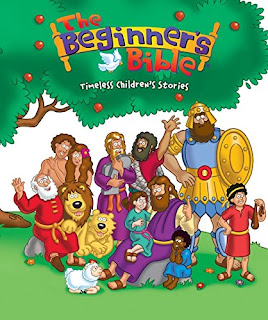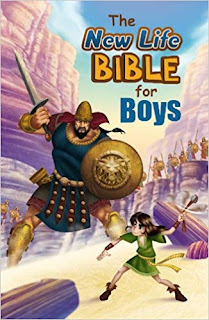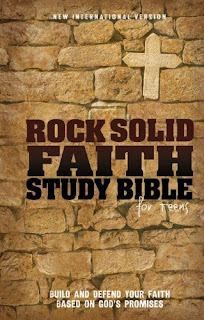When I was a child, I had one Bible that served me throughout my entire childhood...until I finally got my first "real" Bible as a teen. Waaaaaaaay back then, there were only a handful of children's Bibles available, but today, there's a plethora of children's Bibles - and you may be surprised when I say I think your child needs more than one.
As Christian mothers, one of our most important tasks is to teach our children about God. We can do this by reading our own Bibles out loud, but I strongly advise you not to use this as your only method. Children greatly enjoy having their own Bible, and small children are more likely to comprehend what's being read if the Bible contains kid-friendly pictures and easier-to-understand language. Yet even if you read a children's Bible to your kids every day, they may soon become weary of it. Not to mention, as your child grows, so will her knowledge and understanding...and her Bible should reflect that.
I recommend keeping at least 3 age-appropriate Bibles for your child at all times. This way you can rotate them, and the stories (and their meaning) stay fresher. As your child matures, switch out those Bibles for copies that better reflect your child's understanding.
When to Start Reading the Bible
It's never too early to begin reading the Bible to your child.
Let me type that again! It's never too early to begin reading the Bible to your child!
Studies show that when we read to infants, they develop better language skills. And why read them only secular stories? After all, isn't the Bible a lot more important than nursery rhymes, the alphabet, colors, and shapes? I have fond memories of reading my babies Stephen Elkins' board books filled with short Bible verses. (See the first book listed below.) My babies enjoyed the pictures - and I assure you the words did seep into their consciousness, making them able to (roughly) recite Bible verses even at a young age.
For babies and toddlers, I recommend choosing Bible storybooks with colorful and engaging pictures of animals and children. Very small children often prefer very small books that are easy for them to hold, but the most important thing Bible storybooks can do for children in this age group is introduce them to the major stories of the Bible, in addition to actual Bible verses.
I recommend:

The Busy Bible by Judy Starks. (This is a felt "busy book" that's definitely worth the price!)
Bibles for Preschoolers
Children between the ages of 3 and 5 still usually want excellent, colorful illustrations, so look for something with pictures on every page. The Bible stories for this age group can be up to four pages long, depending upon how long your child's attention span is. Bibles that have easy questions for you to ask your child can be helpful.
I recommend:
Bibles for Gradeschoolers
As your child begins to read on her own, choose at least one Bible with easy sentences. Many Bible storybooks for this age group also include activities to make learning more fun. When your child is ready for a Bible without pictures, choose something with modern language (like the NLV or NIV), which will increase your child's comprehension.
In addition to The Big Picture Story Bible and The Jesus Storybook Bible, mentioned above, I also recommend for this age group:
Bibles for Tweens and Teens
Children in this age group should be actively involved in choosing their Bibles, so make some selections ahead of time, then let your child make the final choices. In my opinion, the best Bibles for tweens and teens are "study Bibles," which contain useful commentary and notes to help your child understand the Bible more thoroughly. Emphasis should be placed on that does not teach your child what to think, but rather offers historical insight and tackles tough-to-understand passages.
I recommend:
A version of this post originally appeared in October of 2009. Title image by Samantha Sophia on Unsplash.




























No comments